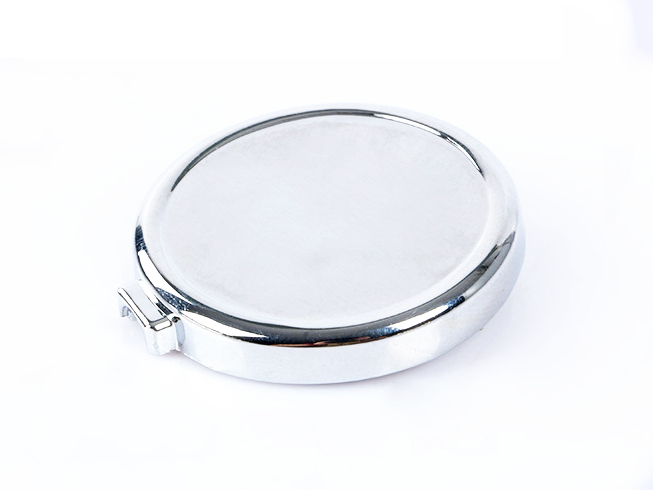Polishing Aluminum Die Castings: A Smooth Finish for Enhanced Appeal
Introduction
Aluminum die castings are favored for their strength-to-weight ratio, precision, and ability to form intricate geometries. However, as-cast surfaces often exhibit minor irregularities, tool marks, or rough textures that affect function and appearance. Polishing is a critical post-processing step that enhances aluminum cast parts' visual appeal and functional performance. Whether used to achieve a decorative finish or to prepare for further surface treatments like painting or electroplating, polishing adds significant value in automotive, electronics, appliance, and medical applications.
At Neway, polishing is integrated into our post-processing service offerings to deliver high-quality finishes for alloys such as A380, A413, and AlSi12.
What Is Polishing for Aluminum Castings?
Polishing is a mechanical finishing process that involves progressively smoothing a casting’s surface using abrasives, buffing compounds, and polishing wheels. Depending on application requirements, the goal is to reduce surface roughness (Ra), remove imperfections, and create a uniform or reflective surface.
Typical Surface Roughness Goals
Finish Type | Ra Range | Typical Use |
|---|---|---|
Standard Finish | 1.6–3.2 µm | Industrial and hidden structural parts |
Cosmetic Finish | 0.4–1.6 µm | Consumer-facing or semi-gloss parts |
Mirror Polish | ≤0.2 µm | Reflective, high-end aesthetic applications |
The process usually includes rough grinding, intermediate sanding, and fine polishing. Tools may include flap wheels, rotary polishers, and buffing compounds formulated for aluminum alloys.
Benefits of Polishing Aluminum Die Castings
Benefit | Description | Application Value |
|---|---|---|
Enhanced Aesthetics | Produces uniform, high-luster finishes | Ideal for decorative or exposed parts |
Improved Surface Integrity | Removes burrs, pits, and casting marks | Prepares for coating, plating, or painting |
Smoother Operation | Reduces friction in mechanical components | Improves fit and sliding functions |
Better Coating Adhesion | Creates an even base for paints or powder coats | Reduces risk of delamination or pinholes |
A polished surface is particularly valuable in cosmetic parts like automotive trim, consumer electronics casings, lighting components, and medical housings where first impressions and tactile feel are important.
Common Aluminum Alloys Polished
Not all aluminum die casting alloys behave identically during polishing. Common choices include:
A380: Most widely used; good polishability with medium effort
A413: Excellent for thin-wall applications; high fluidity makes it suitable for intricate polished parts
AlSi12: Offers good corrosion resistance and decent polishing potential
High-silicon alloys may require additional effort during polishing due to their abrasiveness and tendency to show micro-pitting.
Integration with Other Surface Treatments
Polishing is often used in combination with other finishing techniques. It can be performed either:
As a final cosmetic finish for high-end products (e.g., appliance handles, display frames)
As a preparatory step before painting, powder coating, electroplating, or chromate conversion coating
Polishing + Electroplating
Polishing to Ra ≤ 0.4 µm ensures a defect-free base, improving nickel or chrome coating adhesion and final appearance.
Polishing + Powder Coating
Smooth pre-polished surfaces minimize orange peel and improve powder film uniformity.
Polishing + Anodizing or Chromating
Ensures clean, non-oxidized surfaces for proper conversion coating reaction, especially on AC4C or other corrosion-resistant alloys.
Use Cases and Industry Applications
Polished aluminum die castings are found in high-visibility and precision-use components, including:
Automotive: Trim bezels, engine housings, and mirror brackets
Consumer Electronics: Enclosures for laptops, tablets, or cameras
Appliances: Handles, knobs, display panels
Industrial: Pneumatic housing, sensor casings, actuators
In one case study, mirror-polished A380 components reduced paint rejection rates by over 30% due to smoother, cleaner base surfaces that minimized visual defects after coating.
FAQs
What surface roughness is ideal for cosmetic aluminum die cast parts?
Can aluminum die castings be mirror polished for decorative use?
How does polishing affect paint or electroplating performance?
What types of abrasives are used in polishing aluminum?
Is polishing suitable for high-silicon aluminum alloys?

